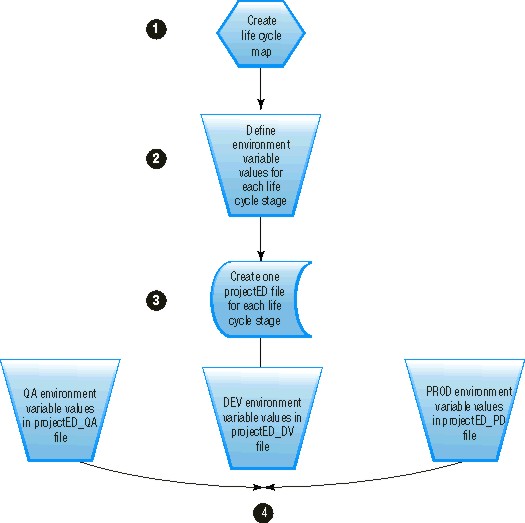Creating a table-driven configuration
A table-driven VOB configuration uses a two-column, tab-delimited file format to configure a project VOB.
About this task
- Create a life cycle map for the project and decide which stages in the life cycle will need build parameters defined. For example, if you want to define a life cycle map for development, QA, and production, you might assign these stages the names DEV, QA, and PROD.
- Determine how you need to set up your environment for each life cycle stage. For example, you might want to use one DB2® subsystem for the DEV life cycle stage and another for the PROD stage.
- Create one projectED_lifesysclestage file for each life cycle stage. For example, if you want to use one DB2 subsystem for the DEV life cycle stage and another for the PROD stage, you can define these subsystems in projectED_DV and projectED_PD files, respectively. The values you define in the projectED_lifesysclestage files can be stored for the life of the project or they can be changed to point to a different infrastructure for a different stage of the life cycle.
- The attributes you have defined for the life cycle are queried by the build engine to determine the proper build parameters for the life cycle stage.

Choose a project this life cycle map is to be applied to. Once a project is determined the ClearCase® Administrator or project manager has to define the environment variables for the project. The environment variables are used by build scripts when a build request is submitted. Each variable contains the value that will be used globally in the project.